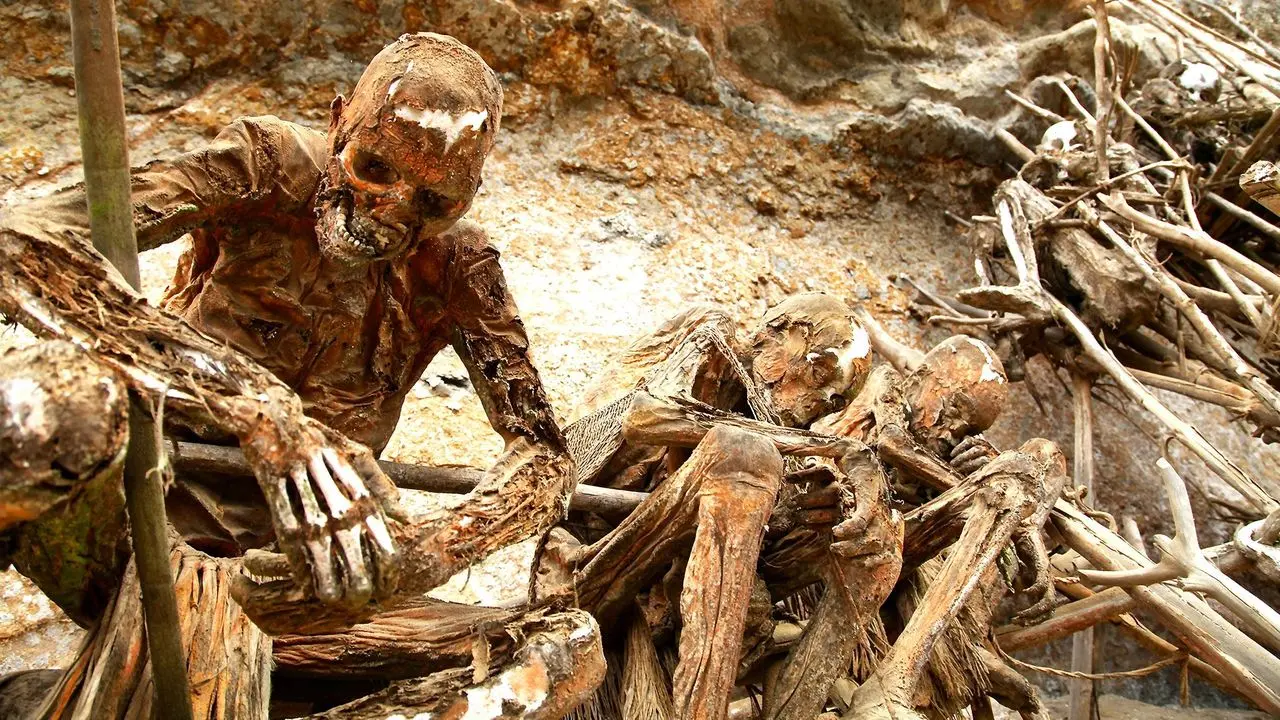In Papua New Guinea, there is a fascinating and ancient tradition known as the smoking of bodies. This practice involves the preservation of human remains through a unique mummification process. The smoked bodies of Papua New Guinea offer a glimpse into the rich cultural heritage of this island nation.
The Mummification Process
The mummification process in Papua New Guinea is a complex and intricate ritual. It begins shortly after death, when the body is brought to a special location known as per-nefer, which translates to the beautiful house. This place serves as the site for mummification.
At per-nefer, the body is carefully washed with water taken from the sacred lake of the temple. To aid in preservation, natron salts are added to the water. Natron, a naturally occurring compound, has desiccating properties that help in drying out the body.
Once the body is prepared, it is placed on an operating table. The first step in the mummification process is the removal of the brain. Embalmers use a chisel to access the cranial cavity through the ethmoid bone of the nose. A spatula is then used to cut the brain, after which a spoon is employed to remove it completely.
Following the brain extraction, the cavity of the skull is washed with palm wine. This wine contains about 14% ethyl alcohol, which helps in disinfection. Finally, the embalmers stuff the cavity with linen soaked in melted resin to ensure preservation.
Tools Used in Mummification
Several tools are used during the mummification process in Papua New Guinea. These instruments play a vital role in the various stages of embalming. Some of the tools used include:
- Round-bowled spoon: This spoon is considered one of the most important instruments in mummification. It is used to remove the brain from the cranial cavity.
- Oval-bowled spoon: Another type of spoon used in the mummification process.
- Scalpel: A surgical knife used for making precise incisions.
- Needle: Used for stitching and closing incisions.
- Knife: An essential tool for various stages of the embalming process.
- Wooden instrument with a padded end: This instrument has a specific purpose in the mummification process, although its exact function is not mentioned in the available information.
The Cultural Significance
The smoking of bodies in Papua New Guinea holds great cultural significance. This ancient practice is believed to be a way of honoring and preserving the memory of the deceased. It is also seen as a means of connecting the present generation with their ancestors.
For the people of Papua New Guinea, the smoked bodies serve as a reminder of their rich cultural heritage and the importance of ancestral traditions. The mummified bodies are revered and respected, as they are considered a link to the past and a source of wisdom and guidance.

Preservation Techniques
The smoking of bodies in Papua New Guinea is a unique preservation technique that ensures the long-lasting integrity of the mummified remains. The use of natron salts, palm wine, and linen soaked in resin helps in desiccation, disinfection, and preservation.
By carefully removing organs, washing the cavities, and stuffing them with preservative materials, the embalmers are able to create mummies that withstand the test of time. The smoked bodies of Papua New Guinea are a testament to the skill and craftsmanship of the ancient embalmers.
The practice of smoking bodies in Papua New Guinea is a fascinating and ancient tradition that showcases the rich cultural heritage of this island nation. The complex mummification process, along with the use of specific tools and preservation techniques, ensures the longevity of these mummified remains.
The smoked bodies serve as a connection to the past, allowing present generations to honor and remember their ancestors. This unique practice highlights the importance of ancestral traditions and the preservation of cultural heritage.
If you want to know other articles similar to Smoked bodies in papua new guinea: ancient mummification tradition you can visit the Mummification category.


Related Articles